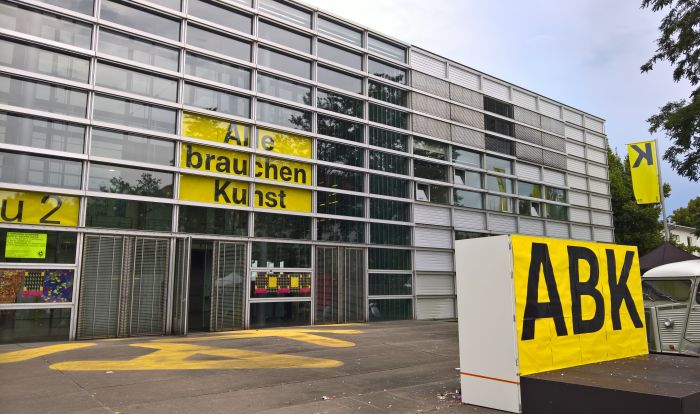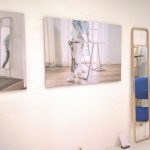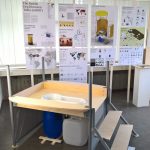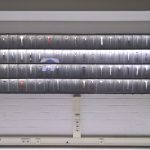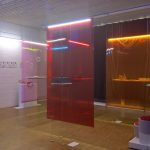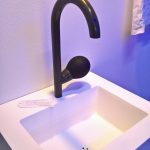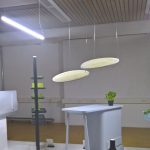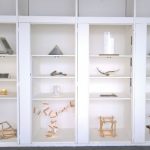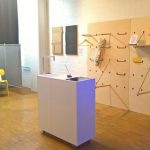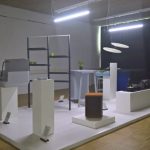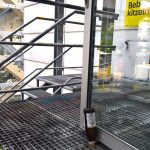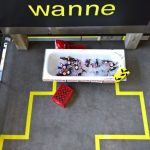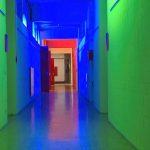#campustour 2018: Rundgang @ Akademie der Bildenden Künste Stuttgart, Germany
Atop bonny Killesberg, and beside Kochenhof, (the) Akademie der Bildenden Künste, ABK, Stuttgart has been nurturing a basic kernel within a bright kettle of students of numerous creative disciplines since 1761.
For their 2018 Rundgang the, we believe the word is, identity, was based on alternative resolutions of the initialism ABK, the central one being Alle brauchen Kunst – Everyone Needs Art.
But do we need that applied, functional art developed in the year past at the ABK Stuttgart……?
A visit to the 2018 Rundgang promised to supply us with a better knowledge, but also to bequeath the students a bit kudos…….?
That we’ve discussed the history of the ABK Stuttgart in previous posts, we refer you dear reader to our 2017 ABK Stuttgart #campustour post for fuller details; and in any case the most important message from the 2018 ABK Stuttgart Rundgang was that the class “Sitzen – Von der Idee zum Objeckt“, a class which challenges students to develop a seating object in one day from a single 4.50 meter long length of wood, apparently didn’t run this year past.
?
Or perhaps better put
???
For while it’s not the only reason for visiting the ABK Stuttgart Rundgang, it is a highlight. Is a real joy. Always gives us a big kick, and sends us on our way with a little more spring in our step. Or was. This year we had to find a brand-new kick.
Intuitively our first steps took us to the Industrial Design showcase.
Where we were instantly aware what it was wasn’t: the experimental electronic musical instruments whose continual amusical droning almost caused us to loose our famously tenuous grasp on reality.
But what was it?
It may have been Anselm Kempf’s Diploma project Sinn & Zweck which elegantly, very, very elegantly combined an ironing board with a mirror. No honest. Not in itself a completely new idea, but a project which did and does represent a very nice piece of abstract consideration on the question of what do you do with an ironing board when not ironing? Especially in a contemporary flat where, unlike the roomy houses of yore, space is invariably at a premium? Particularly space for storing something you only use biennially. Anselm’s answer is a combined ironing board/mirror. No honest.
Alternatively it may have been abeilles by Tilmann Studinsky, realised in context of the class Cibus domesticus and which reimagined the kitchen extractor hood as a leaf-esque, free hanging structure, a still very conceptual work but one which through the material reduction allows the extractor to stand in a new relation to the kitchen and thus to exist as a decorative element in addition to its current, and sole, functional thereness.
Or it many have been the Design for against overconsumption collection by Michael Varga, a collection which tweaked everyday objects with the aim of making our consumption behaviour more conspicuous, less anonymous, and including a clothes hanger which throws your clothes on the ground to highlight the fact you’re not wearing them, a huge hand shaped light switch and, and our favourite, a sink tap that you have to squeeze, and which releases a quantity of water reflective of how hard you squeeze. And one of several such squeeze faucets we met on our 2018 #campustour, but somehow the context of Michael’s made particular sense. And neatly highlighted the logic of such a system.

In Stuttgart Industrial Design can be found over the rainbow, that place where “dreams really do come true”
Of course our new annual big kick might not have been in Industrial Design. Or at least not purely Industrial Design. It might have been there where architects and designers meet, specifically, it might have been the Architectural Design + Urban Planning + Industrial Design project Mobile Dry Diversion Toilet in which a, dry toilet, was developed for areas without access to integrated sanitation systems and which collects liquid and solid waste separately for subsequent composting (solids) or other uses and/or composting (liquids); and that all in system that can be delivered ready to construct on a palette. Currently being tested in Ethiopia and Nigeria we’d argue that although as a project it is no real substitute for integrated sanitation systems, it would appear to represent a very real improvement on current realities.
Or it could have been completely outwith Industrial Design, it could have been the Architectural Design + Urban Planning project African Mobility by the multi-disciplinary African Mobile Research Group, which took the example of Ethiopia, and thereby represents one of the world’s least urbanised countries, as a model for considerations on global future transportation strategies. And therefore one of those very satisfying projects that asks us Europeans to step back briefly from our natural genius and consider what we can learn from other peoples. You know, those we colonise and “help”. Or put another way, as the project group asks in context of future European mobility, “What if… the future already exists”. In Ethiopia. No, what if……..? And a project we’ll come back to in a different context real soon.
Or maybe it was none of the above, maybe it was that the 2018 ABK Stuttgart Rundgang presented a bright kaleidoscope of what design is and can be.
Full details on the Akademie der Bildenden Künste Stuttgart can be found at www.abk-stuttgart.de
- Sinn & Zweck by Anselm Kempf, as seen at Akademie der Bildenden Künste Stuttgart, Rundgang 2018
- Mobile Dry Diversion Toilet, as seen at Akademie der Bildenden Künste Stuttgart, Rundgang 2018
- Since time immorial Prof Winfried Scheuer has aked first semester students to design a rasor, here the complete collection…….
- Results of the class Cash, Money, Money, as seen at Akademie der Bildenden Künste Stuttgart, Rundgang 2018
- Michael Varga Design for against overconsumption faucet, as seen at Akademie der Bildenden Künste Stuttgart, Rundgang 2018
- abeilles by Tilmann Studinsky, as seen at Akademie der Bildenden Künste Stuttgart, Rundgang 2018
- Results of the class Grundlagen der Konstruktion, as seen at Akademie der Bildenden Künste Stuttgart, Rundgang 2018
- Results of the class Kleinraumwohnen, as seen at Akademie der Bildenden Künste Stuttgart, Rundgang 2018
- Results of the class Cibus domesticus, as seen at Akademie der Bildenden Künste Stuttgart, Rundgang 2018
- In Halle its a chair, in Stuttgart a beer bottle, and everywhere a Gambiarra
- Still not entirely sure why the smow blog bath was in Stuttgart, but if we coudl have it back that would be great…..
- Akademie der Bildenden Künste Stuttgart, Rundgang 2018
Tagged with: #campustour, ABK, Akademie der Bildenden Künste Stuttgart, Rundgang, Stuttgart
